Unraveling the mysteries of birds vol.3
What is the fastest creature on Earth?
Fast flying birds and the secret to their speed.

Fast flying birds and the secret to their speed.

What do you think is the fastest creature on Earth?
There is a variety of living creatures that are fast—some run fast, some swim fast, and some fly fast.
Let's look at how fast they are!

Challenge #1
There are all kinds of fast creatures. The fastest running animal is the cheetah that lives on the savannah in Africa. The cheetah can reach a top speed of 110 kilometers per hour (km/h), which is slightly faster than cars driving on a highway. If a cheetah was to compete in the 100-meter dash, it would cross the finish line in just 3.27 seconds, roughly three times faster than the current (2021) world-record time of 9.58 seconds set by Usain Bolt.
There are also birds that are good runners. The Greater Roadrunner that lives in deserts of North America is known to run at up to 42 km/h. The fastest running bird though is the Common Ostrich. It can reach a running speed of 70 km/h. At that speed it could do the 100-meter dash in 5.14 seconds, which would be roughly twice the speed of Usain Bolt. Since a lion can only reach 60 km/h at best, an ostrich could easily get away if being chased by a lion.
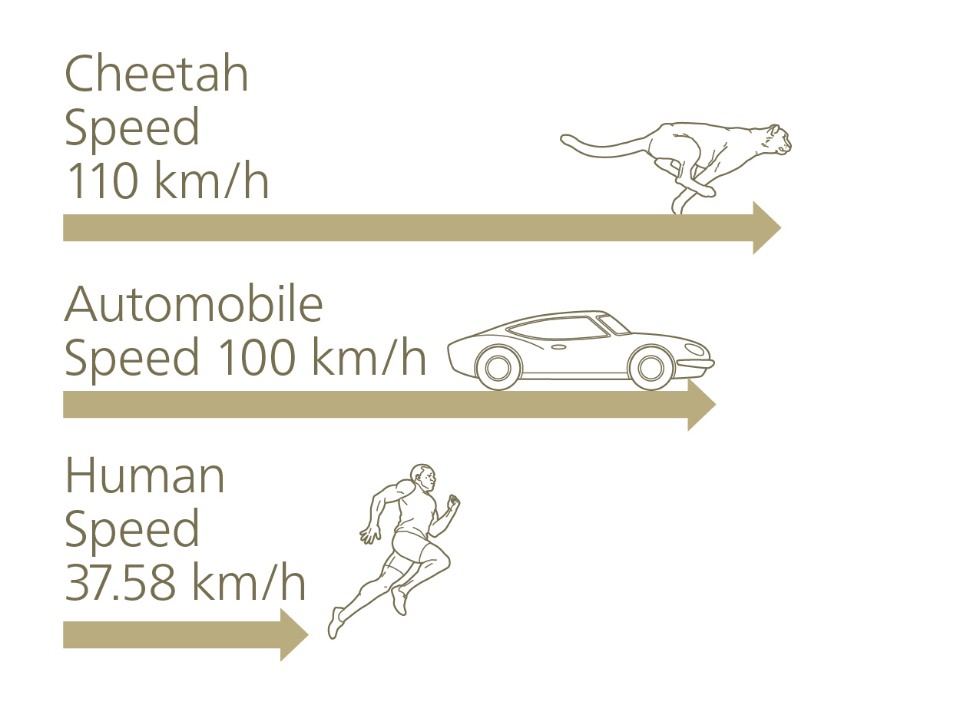
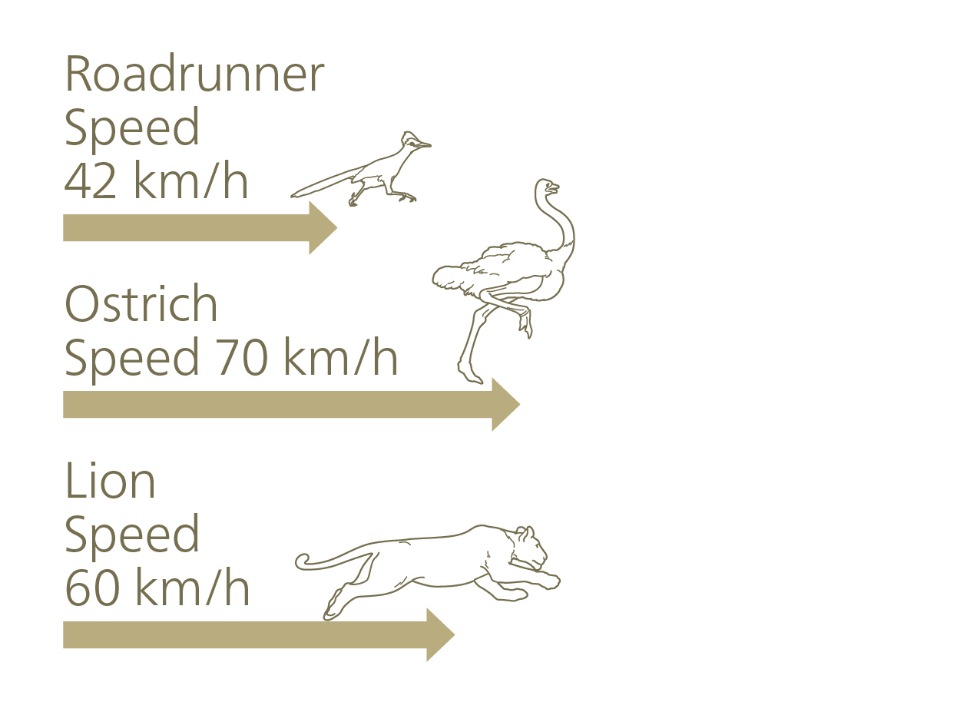
There are many fast creatures in the water. Let‘s take tuna as an example. Since tuna is a fish that swims continuously, it looks very fast. But its maximum speed is 70 km/h at best. Certain species of marlin are faster than that; the fastest ones on record are the Indo-Pacific blue marlin at 129 km/h and the Indo-Pacific sailfish at 110 km/h. At those speeds it would take less than one second to swim the length of a 25-meter pool.


Challenge #2
Faster than creatures on land and in the water are birds that fly in the air. What is the fastest bird? There are two entries for “world's fastest bird” in the Guinness Book of World Records. The fastest in horizontal flight is the White-throated Needle tail at 170 km/h, and the other record for fastest speed in a downward dive (called a stoop) is held by the Peregrine Falcon at 389 km/h.
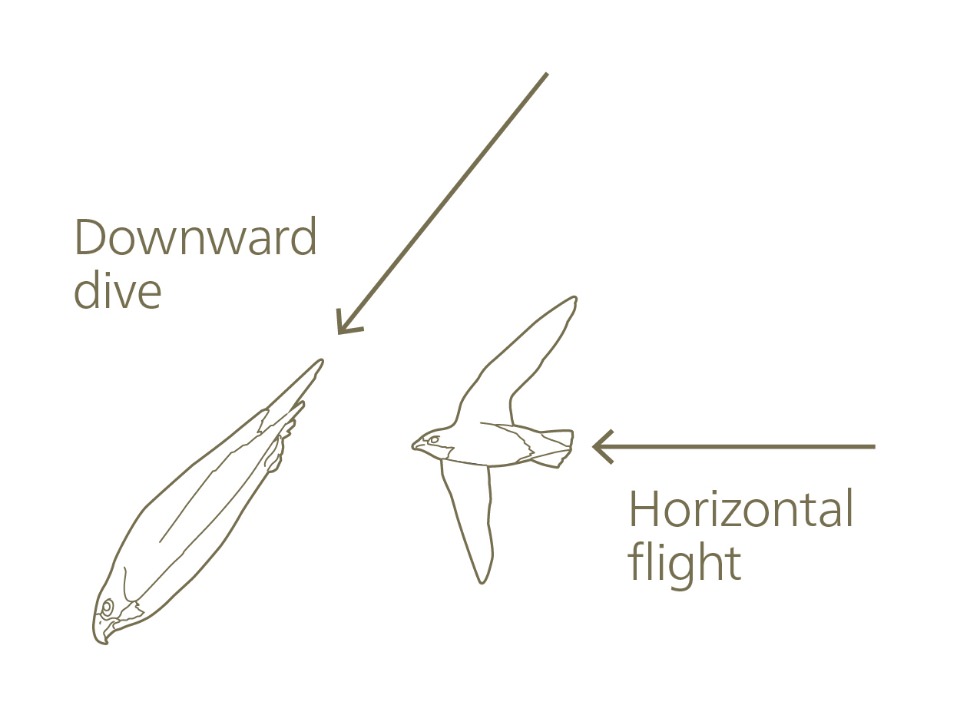

When attacking other birds, raptors such as the Peregrine Falcon make a high-speed dive from high altitude and utilize the weight of their body to strike the prey. The hunting technique of the Peregrine Falcon involves diving, striking, and then turning sharply to capture and carry off its prey. So, the record of the Peregrine Falcon is for the high speed achieved when making a dive (stoop) to chase prey. To measure the speed of the Peregrine Falcon, researchers went up in an air balloon with a domesticated falcon and dropped prey from a high altitude, then clocked the speed as it stooped to chase the prey.
The speed of the Golden Eagle, which employs the same method of diving from a great height, has also been measured. Although not as fast as the Peregrine Falcon, it has been recorded to reach 322 km/h. However, raptors (such as hawks, falcons and owls) do not always fly at this speed. The fastest speed achieved by either the Peregrine Falcon or the Golden Eagle in horizontal flight is 110-130 km/h at best; the average speed of the Peregrine Falcon is in the range of 70-90 km/h while the Golden Eagle is 40-50 km/h.
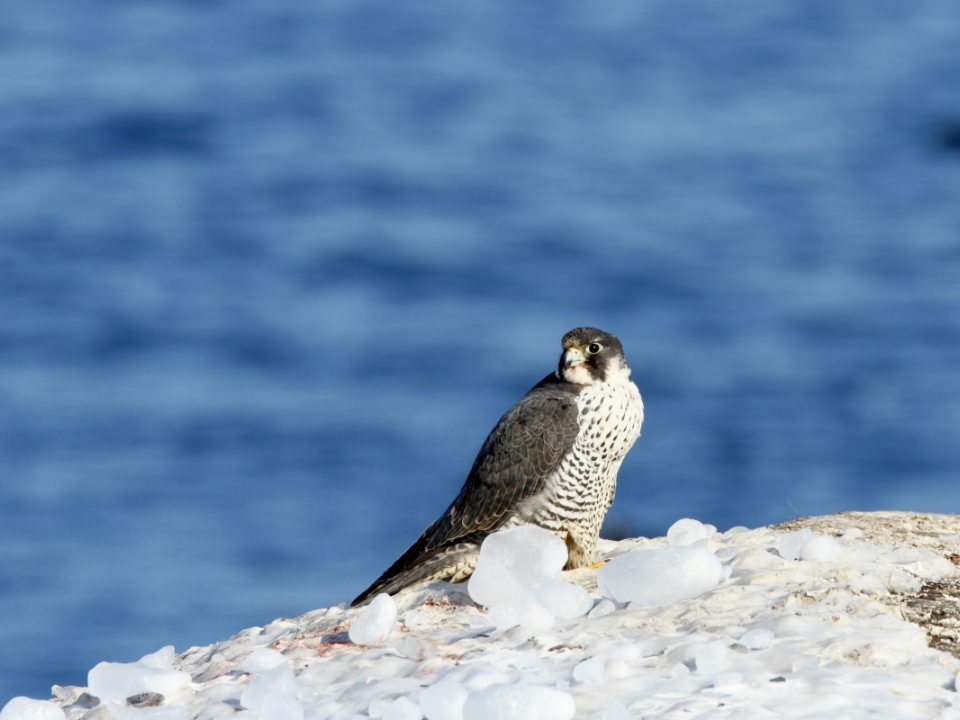
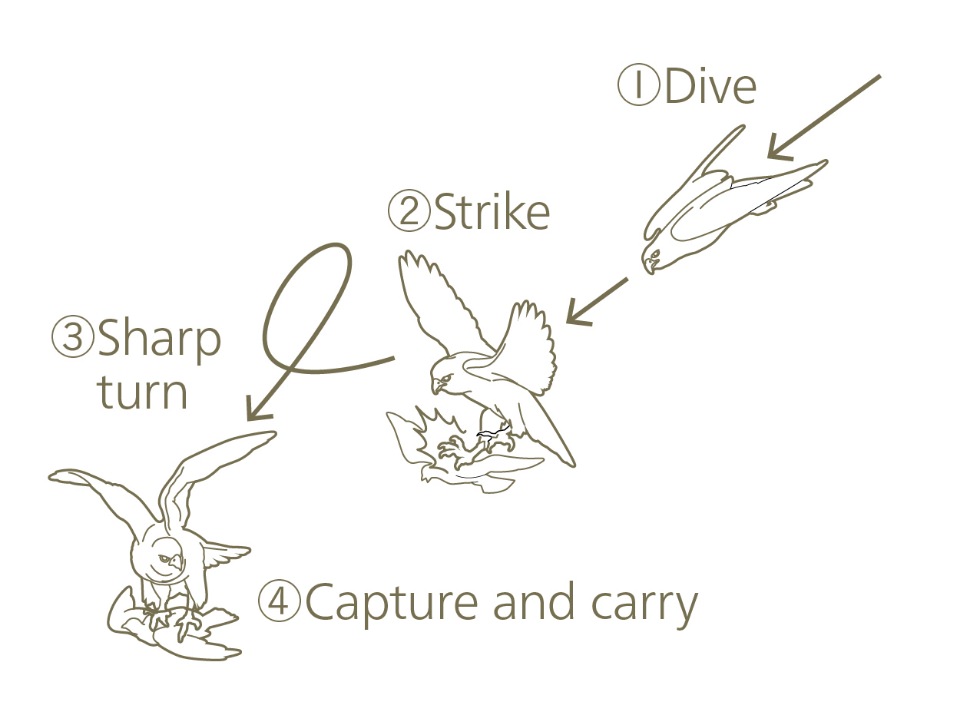
In horizontal flight, the White-throated Needle tail has been recorded reaching a speed of 169 km/h and the Pacific Swift a speed of 166 km/h. Swifts are not members of the swallow family, rather they belong to a group close to nightjars and hummingbirds. Swifts are high- and fast-flying birds that feed on flying insects brought up by ascending air currents. Since they spend most of their life flying, It is said that they may possibly even sleep in the air.

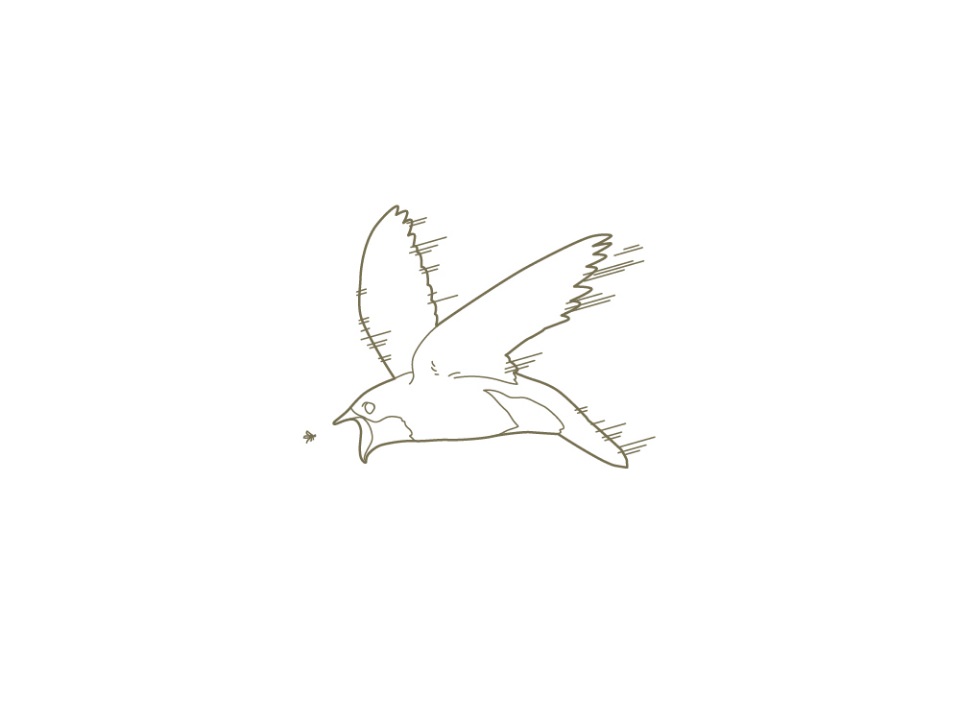
Swallows have long, narrow wings and certainly look as if they are fast fliers. However, when compared with swifts, swallows can fly with agility but their speed in horizontal flight is not so fast.
I have had the opportunity to observe the speed of a migrating swallow. It was during my journey back to Tokyo from the Ogasawara Islands when I decided to look out the window of the boat to see if I could spot any birds flying at sea. A Barn Swallow approached from the back end of the boat and passed by flying north.
At the time, it took 25.5 hours for the boat to sail the 1,000 kilometers from Tokyo to the Ogasawara Islands travelling at a speed of around 40 km/h. The swallow flew slowly overhead in a northerly direction as I looked up at it. I did not actually measure the speed, but I think it was probably flying at around 50-60 km/h.
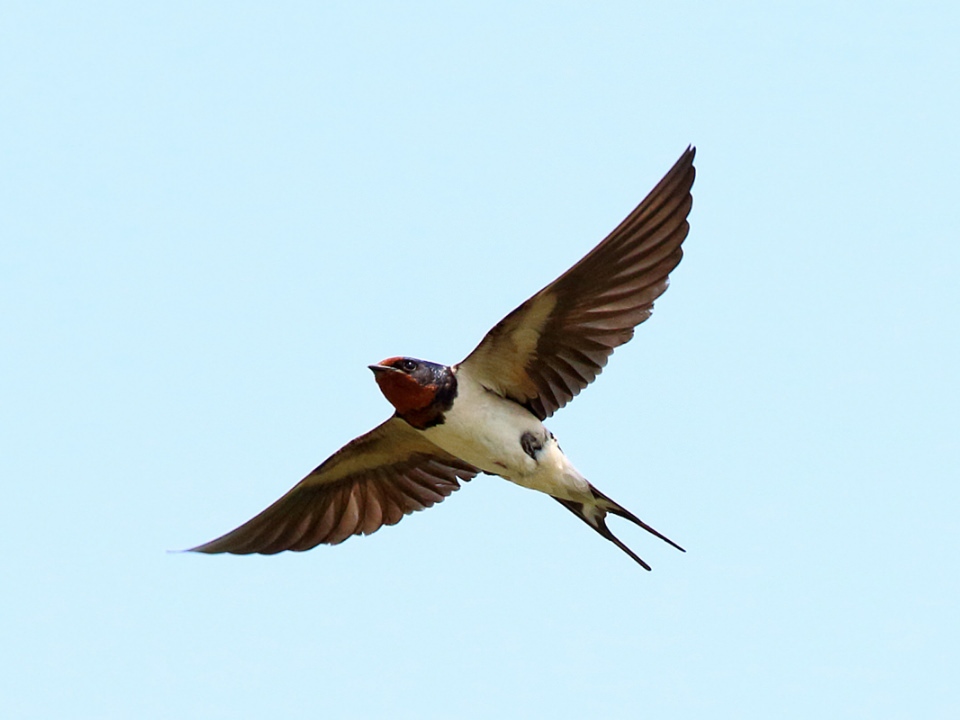
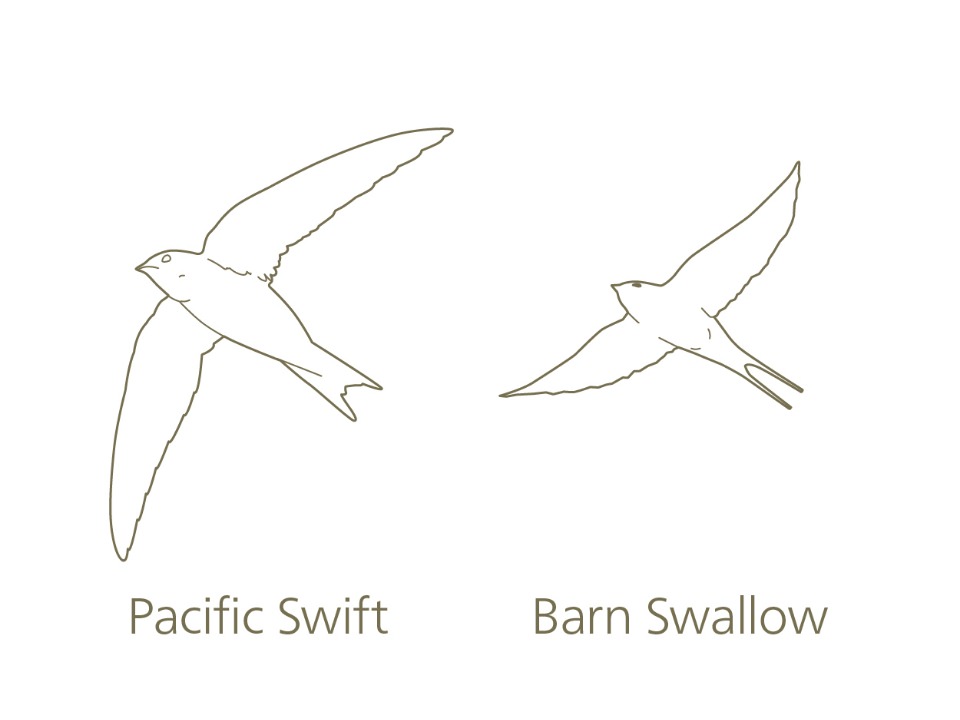
Swallows migrate from countries in the south when spring comes. Swans migrate from countries in the north when winter comes. Since swallows are in Japan in spring and summer, they are called summer birds, and since swans are in Japan for winter, they are called winter birds. Why do birds move to another place (migrate) for summer and winter? The reasons are to have a supply of food and to raise their young. Swallows come to Japan in summer in order to raise their young during the summer season when insects are plentiful in Japan. Swans come in winter to have a stable supply of food since they cannot find food easily in the snow and ice that cover the land of Siberia during winter.

Challenge #3
Years ago, the flying speed of large duck species was measured by flying alongside them in a light aircraft like a Cessna plane. Nowadays though, thanks to the miniaturization of GPS devices that can record the migration path and be easily attached to a bird's body, a large amount of data can be collected.
Among such data is a record of the Spur-winged Goose of Africa flying at a speed of 143 km/h. This is probably the fastest speed achieved by a duck species. Species of diving duck that live at sea and feed by diving beneath the surface of the water can also fly considerably fast. The Common Merganser can reach 130 km/h, the Common Pochard can go 128 km/h, and the Common Eider can achieve 122 km/h. In contrast, non-diving ducks that get their food while floating on rivers and lakes, such as the Common Teal for example, have at present only been recorded flying at 70 km/h.
The reason for the fast speed of diving ducks is believed to be the development of strong chest muscles since they also use their wings when diving under the water to catch fish.

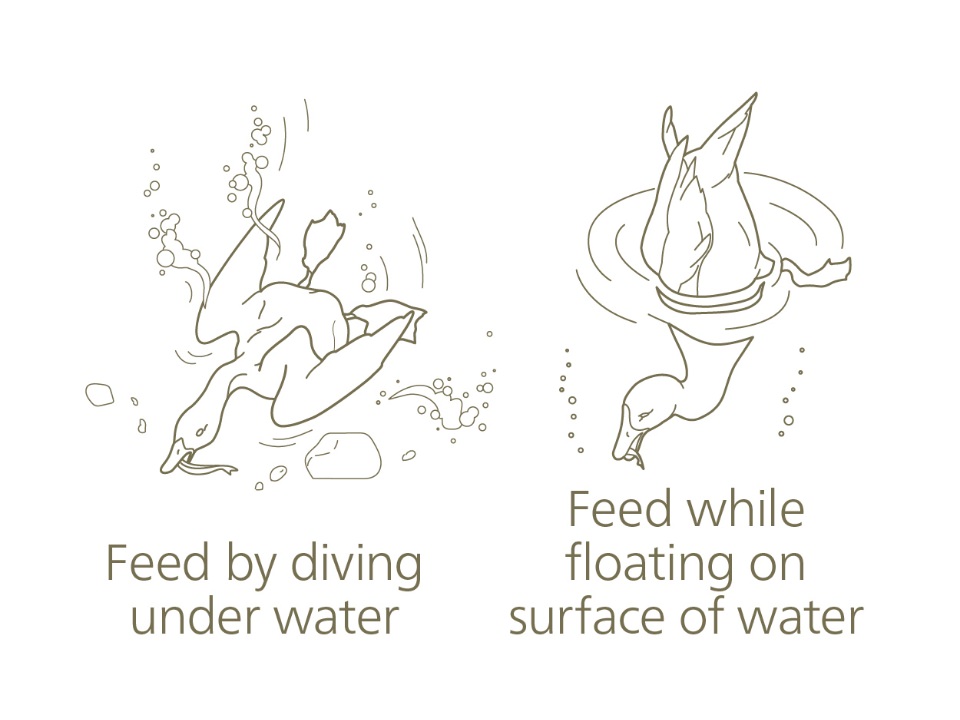
If you record flight position data over time, you can find out the speed a bird is flying at between two places.
The Wild Bird Society of Japan attached a satellite transmitter on Latham's Snipes in Hokkaido to investigate the migration route and number of days it takes them to fly to Australia. This year, one of the birds fitted with a transmitter from the Yufutsu Plain in Hokkaido arrived at its wintering area in Australia after flying the 7,800-kilometer distance non-stop in six days. It was calculated to have flown at a speed of about 50 km/h.
The Bar-tailed Godwit has an even more impressive record. A Bar-tailed Godwit flew 12,000 kilometers non-stop across the Pacific Ocean from its breeding grounds in Alaska to its wintering spot in New Zealand in 11 days. Its average speed enroute was about 45 km/h.
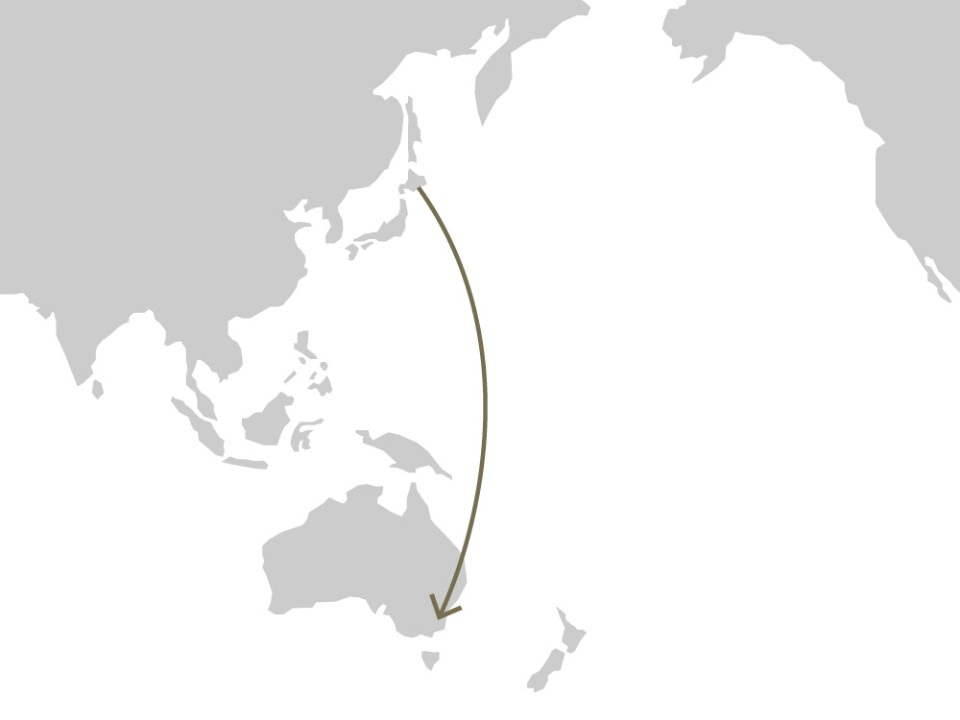
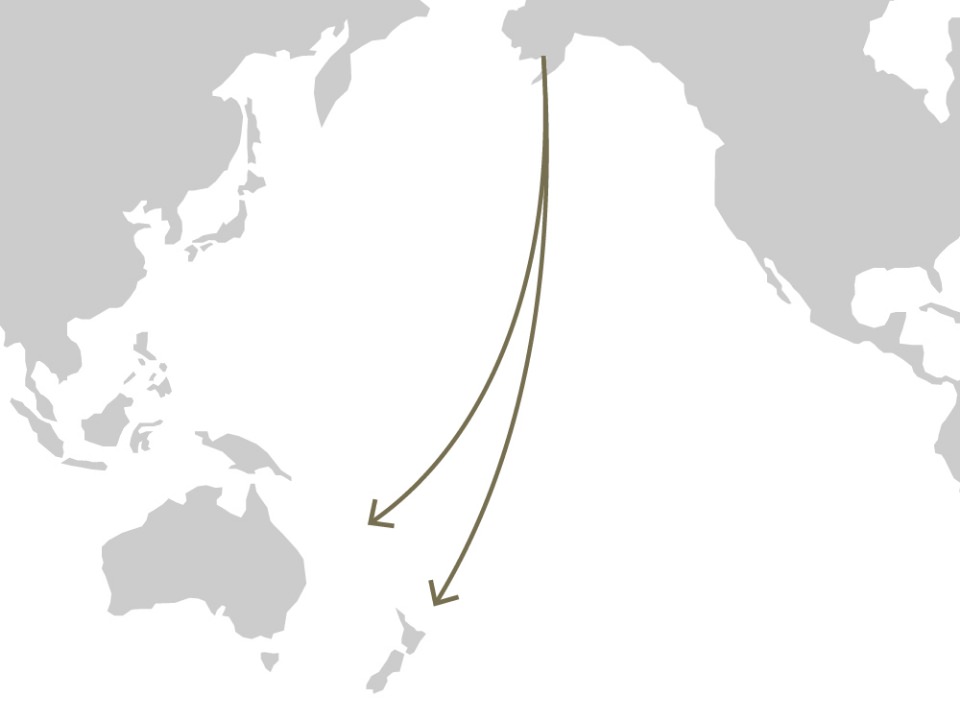

Birds can fly fast. But perhaps they may not want to fly that fast all the time. When, where and for what purpose birds fly fast is deeply connected to each bird's biology.
When you see a bird flying, think about the way the bird is flying, how fast it is flying, and its purpose for flying, and write your thoughts on the worksheet. There is also a variety of information about the way birds fly in “Unraveling the mysteries of birds vol. 2: Why do birds fly?”
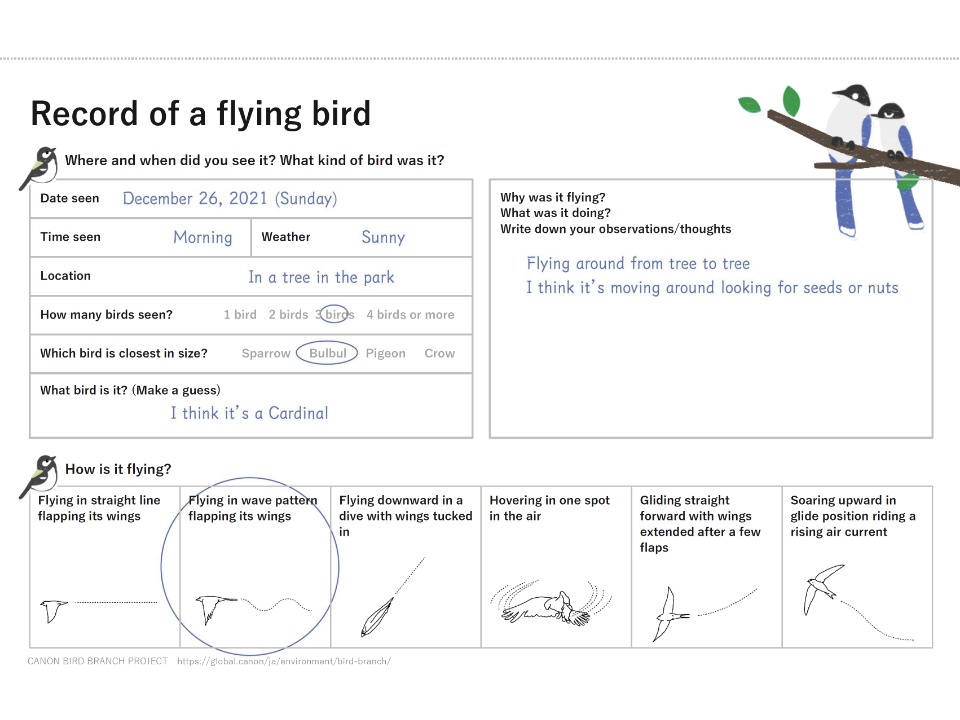
Wildlife ecologist
Professor Emeritus, College of Science at Department of Life Science in Rikkyo University
Former President of the Ornithological Society of Japan
Born in 1950 in Osaka Prefecture. Areas of research include evolutionary ecology of plants and animals with particular focus on avian species, and also environmental issues. Vice-president and Trustee member of the Wild Bird Society of Japan. Currently works as editor in chief of Strix, a member-authored journal of field ornithology, published by the Wild Bird Society of Japan.
